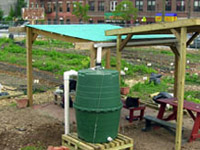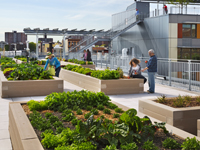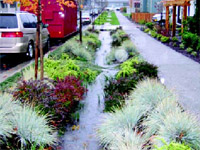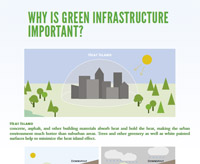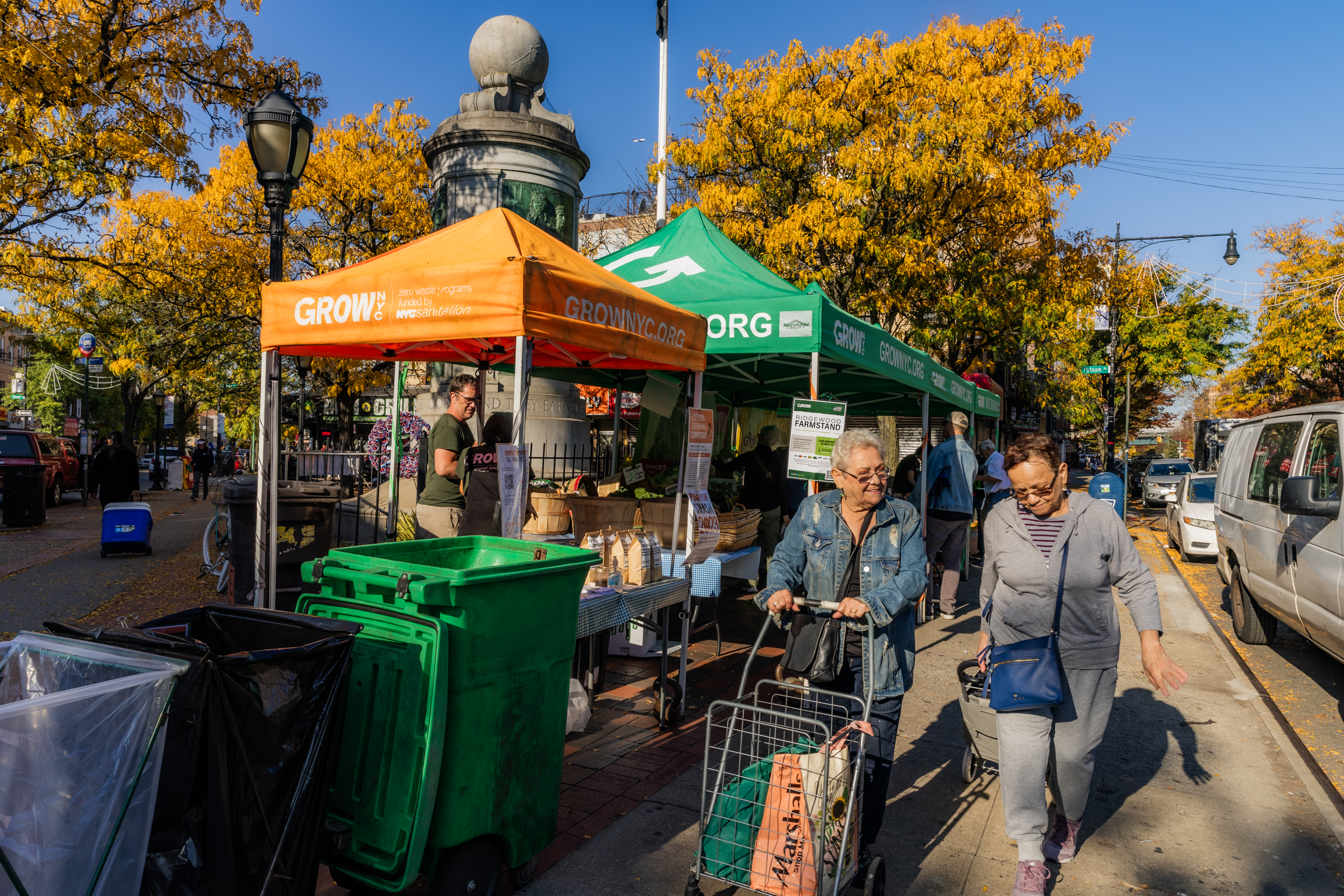GrowNYC's Green Infrastructure Toolkit is designed to educate homeowners, community gardeners and others interested in storm water management techniques that can help minimize the effects of rainfall on water bodies in cities that have combined sewers and other places that experience flooding and storm water problems. The photographs, detail drawings, material lists and text provide a starting point for those interested in utilizing these practices in their homes, gardens and communities.
QUICK LINKS
THE PROBLEM
In New York City, a combined sewer system causes water runoff, household sewage, and industrial wastewater to be combined and sometimes overflow into nearby waterways in what is called a Combined Sewer Overflow or CSO. Every year, more than 27 billion gallons of contaminated wastewater are discharged into New York Harbor during CSO events.
THE SOLUTION
CSOs can be mitigated with green infrastructure design, some of are highlighted below. Rainwater harvesting, bioswales, rain gardens, downspout planters, green roofs, permeable paving, and enhanced tree pits are just a handful of green infrastructure techniques that we can use to relieve the strain on our sewer system and prevent pollution in our waterways.
Rainwater harvesting is the collection of rainwater, typically from gutters and downspouts, and the storage that rainwater in large, durable containers.
A green roof is a vegetative layer grown on a roof that holds rain water and reduces roof temperature. Green roofs can be ornamental and low profile or used for intensive vegetable growing.
A rain garden includes native shrubs, perennials, and grasses that can withstand both drought and occasional flooding, generally planted on a low point of a slope.
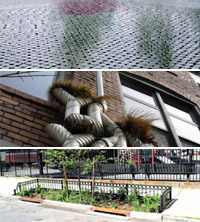 Permeable Pavement, Downspout Planters & Enhanced Tree Pits
Permeable Pavement, Downspout Planters & Enhanced Tree Pits
Permeable pavement is designed to allow percolation or infiltration of stormwater through the surface into the soil below where the storm water is naturally filtered and pollutants are removed.
A downspout planter places plants along or at the end of a downspout to capture the water before it enters the sewer. Rainfall is captured by the planter allowing for infiltration and capture of pollutants.
An enhanced tree pit collects rainwater by diverting runoff from the street into a cut into the curb.
Bioswales are used to convey water to plants, rain gardens, or storm drains, while allowing the water to infiltrate into the soil and be soaked up by the vegetation, therefore reducing flooding.
Download presentations, reports, plans for rainwater harvesting structures, and more.





